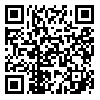1. Doherty MJ. Theory of mind: how children understand other's thoughts and feelings? Khanjani Z, Hadavand Khani F. (Persian translator). Tehran: Samt Publications; 2020.
2. Atkinson RL, Atkinson RC, Smith EE, Bem DJ, Nolen-Hoeksema S. Zamineye ravanshenasi Hilgard [Hilgard's introduction to psychology]. Barahani MN, Birashk B, Beyk M, Zamani R, Shamloo S, Shar Aray M, et al. (Persian translator). Tehran: Roshd Publication; 2012. [Persian]
3. Dadsetan P. Language disorders assessment and treatment (developmental psychopathology vol 3). Tehran: Samt Publications; 2012. [Persian]
4. Grady CL, Keightley ML. Studies of altered social cognition in neuropsychiatric disorders using functional neuroimaging. Can J Psychiatry. 2002;47(4):327–36. [
DOI]
5. Coundouris SP, Adams AG, Henry JD. Empathy and theory of mind in Parkinson's disease: a meta-analysis. Neurosci Biobehav Rev. 2020;109:92–102. [
DOI]
6. Yaghoubi H, Ahmadi E, Maleki M. Comparison of mind theory and decision-making process between Parkinson's disease patients and normal people. Journal of Psychological Science. 2020;19(85):47–55. [Persian] [
Article]
7. Symons DK. Mental state discourse, theory of mind, and the internalization of self–other understanding. Developmental Review. 2004;24(2):159–88. [
DOI]
8. Moosavi SK, Amiri Majd M, Bazzazian S. A comparison of theory of mind between children with autism, intellectual disability, ADHD, and normal children. Middle Eastern Journal of Disability Studies. 2014;4(2):43–51.[Persian] [
Article]
9. Bayati H, Pourmohamadrezatajrishi M, Zademohamadi A. The effectiveness of drama therapy on attention span in boy students with intellectual disability. Journal of Clinical Psychology. 2012;4(1):75–85. [Persian] [
Article]
10. Hemmati Alamdarloo G, BehPajooh A, Afrooz GA, Ghobari Bonab B, Moosapour N. Tarrahi rahnamaye barnameye darsi maharat haye pish herfe'ei baraye danesh amoozan ba natavani hooshi dar doreye ebtedaei [Designing a pre professional skills curriculum guide for students with intellectual disabilities in elementary schools]. Journal of Curriculum Research. 2013;2(1):1–31. [Persian] [
DOI]
11. Ansari Nezhad S, Molly G, Adib Sershaki N. The effectiveness of theory of mind training on the promotion of theory of mind levels in educable intellectual disability students. Research in Clinical Psychology and Counseling. 2011;1(2):105–20. [Persian] [
Article]
12. Ghorbani N, Jabbari S. The effect of training theory of mind on executive function of boy students with learning disabilities. Psychology of Exceptional Individuals. 2018;8(31):259–37. [Persian] [
Article]
13. Mikaeili N, Esmaeili M. Comparison theory of mind and executive function in the students with learning disabilities and normal. Psychology of Exceptional Individuals. 2016;6(21):100–81. [Persian] [
Article]
14. Saeedi C. Barrasiye tahavol nazariye zehn va rabeteye aan ba maharat haye zabani va maharat haye ejtemaei koodakan narasa khan [Investigating the evolution of the theory of mind and its relationship with the language skills and social skills of dyslexic children] [Thesis for MSc]. [Tehran, Iran]: Faculty of Economics and Social Sciences, Razi University; 2013. [Persian]
15. Modir Khazani M. Mo'allefe haye zabani va tavanaei nazariye zehn dar koodakan dore pish dabestani [Linguistic components and ability of theory of mind in preschool children] [Thesis for MSc]. [Tehran, Iran]: Faculty of Educational Sciences and Psychology, Al-Zahra University; 2012. [Persian]
16. Gall MD, Borg WR, Gall JP. Educational research: an introduction. 6th edition. US: Longman Pub; 1996.
17. Wechsler D. Wechsler Intelligence Scale for Children, fourth edition. American Psychological Association; 2012. [
DOI]
18. Shahim S. Barrasiye form haya kootah meghyas Wechsler koodakan baraye estefade dar Iran [Examining the short forms of the Wechsler children's scale for use in Iran]. Journal of Social and Human Sciences of Shiraz University. 1994;9(2):67–79. [Persian]
19. Newcomer PL, Hammill DD. Azmoon roshd zaban 3: Told – P (Newcomer va Hammill): entebagh va hanjaryabi [TOLD-P language development test: 3 (Newcomer and Hammill): adaptation and standardization]. Hassanzadeh S, Minaei A. (Persian translator). Tehran: Ministry of Education, Research Institute of Education Studies; 2009. [Persian]
20. Muris P, Steerneman P, Meesters C, Merckelbach H, Horselenberg R, van den Hogen T, et al. The TOM test: a new instrument for assessing theory of mind in normal children and children with pervasive developmental disorders. J Autism Dev Disord. 1999;29(1):67–80. [
DOI]
21. Ghamrani A, Alborzi Sh, Khayyer M. Barrasiye ravayi va etebar azmoon nazariye zehn dar gruhi az daneshamoozan aghabmande zahni va aadi shahr Shiraz [Examining the validity and reliability of the theory of mind test in a group of mentally retarded and normal students in Shiraz]. Journal of Psychology. 2006;10(2):181-99. [Persian]
22. Poursalemiyan Sh. Asar bakhshiye amoozesh takalif nazariye zehn bar maharat zaban va raftar sazeshi danesh amoozan natavan zehni [The effectiveness of teaching theory of mind assignments on language skills and adaptive behavior of mentally disabled students] [Thesis for MSc]. [Isfahan, Iran]: Faculty of Psychology and Educational Sciences, University of Isfahan; 2012. [Persian]
23. Tager-Flusberg H, Joseph RM. How language facilitates the acquisition of false-belief understanding in children with autism. In: Astington JW, Baird JA; editors. why language matters for theory of mind. Oxford University Press; 2005. [
DOI]
24. Milligan K, Astington JW, Dack LA. Language and theory of mind: meta-analysis of the relation between language ability and false-belief understanding. Child Dev. 2007;78(2):622–46. [
DOI]
25. Ebert S. Theory of mind, language, and reading: Developmental relations from early childhood to early adolescence. J Exp Child Psychol. 2020;191:104739. [
DOI]
26. Hughes C. Theory of mind grows up: Reflections on new research on theory of mind in middle childhood and adolescence. J Exp Child Psychol. 2016;149:1–5. [
DOI]
27. Ghamrani A, Alborzi Sh. Barrasiye tahvaoli teori zehn dar koodakan aghab mandeye zehni khafif va koodakan aadi 7 ta 9 sale [Developmental study of theory of mind in mildly mentally retarded children and normal children aged 7 to 9 years]. Psychological Studies. 2006;1(4):5–28. [Persian] [
DOI]

 ، غلامرضا گل محمدنژاد بهرامی*2
، غلامرضا گل محمدنژاد بهرامی*2 
 ، حمیده پرکار3
، حمیده پرکار3 
 ، عیسی برقی4
، عیسی برقی4 
 ، صیاد عبدالهی اصل1
، صیاد عبدالهی اصل1 
 ، پروین بهاری1
، پروین بهاری1 




